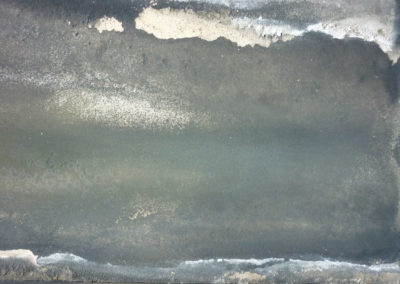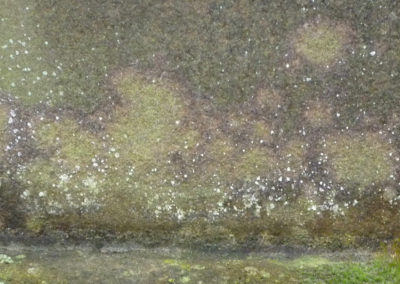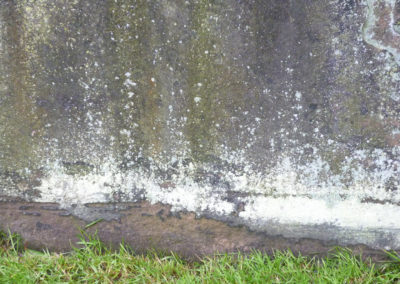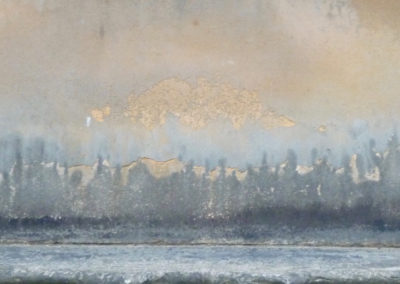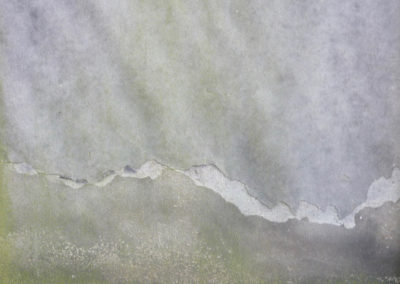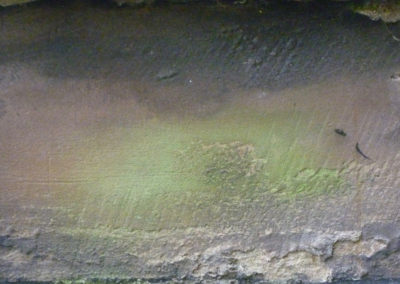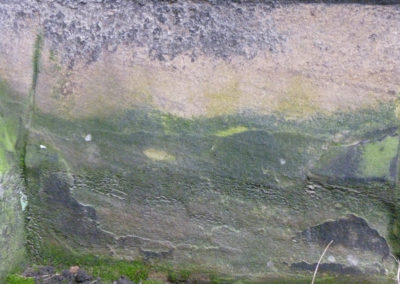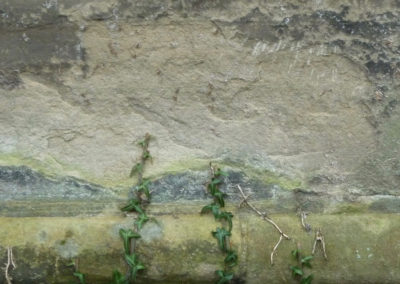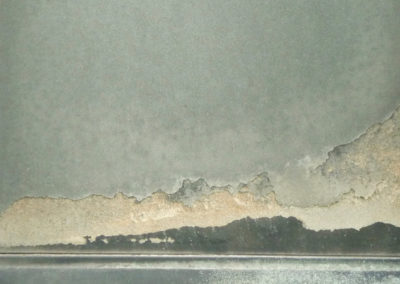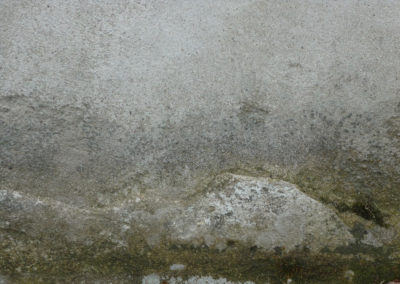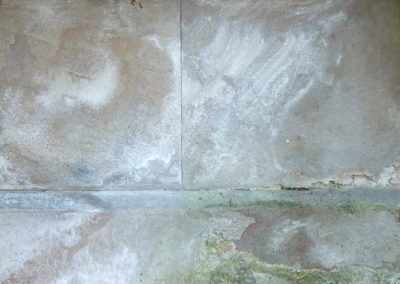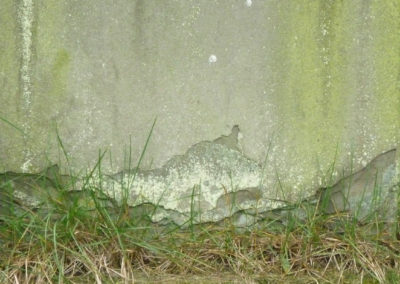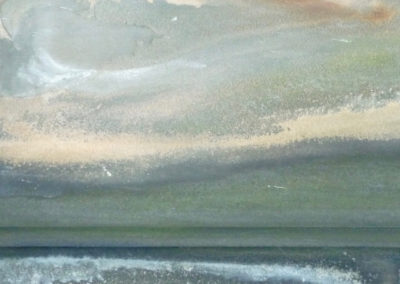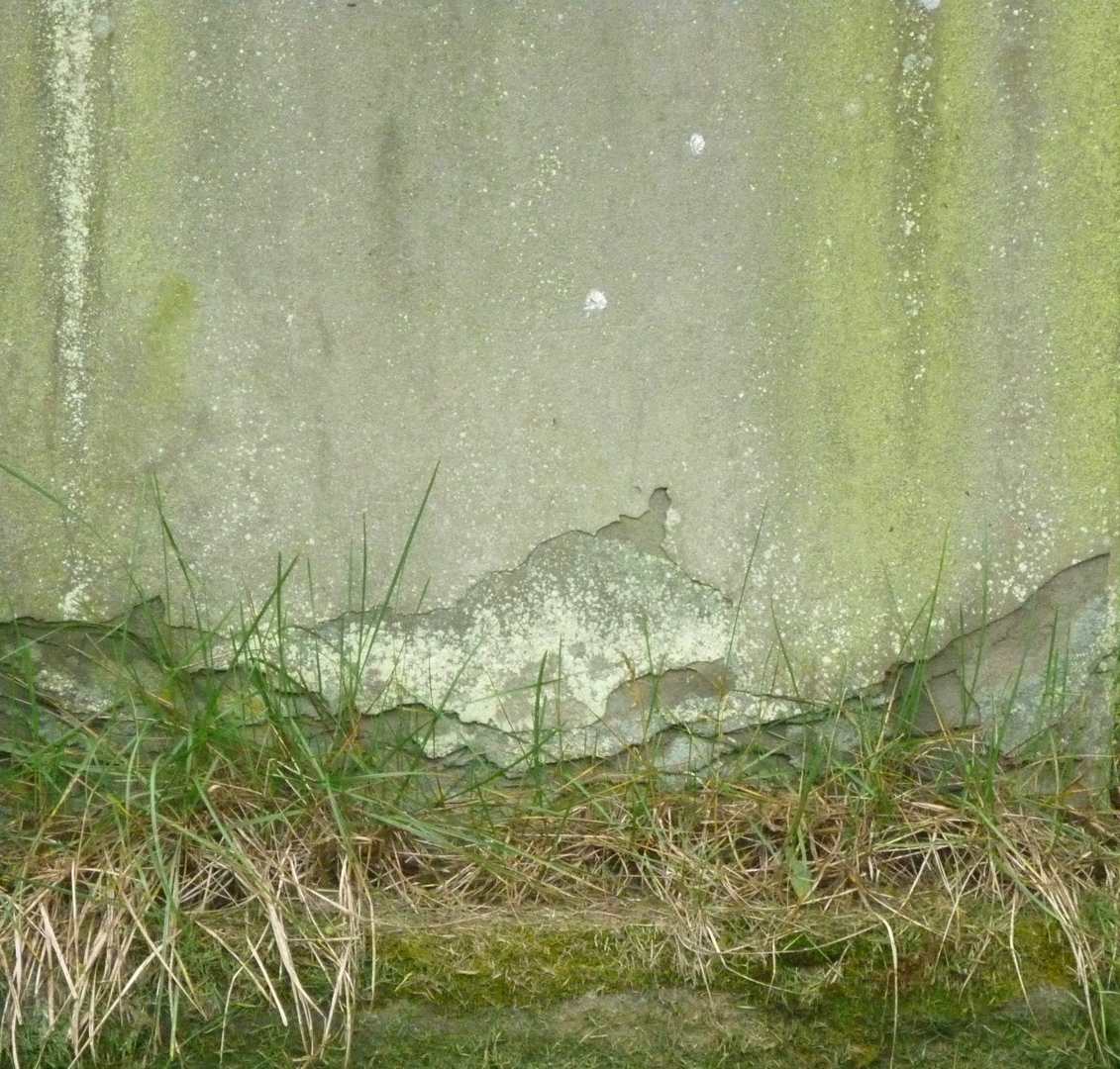
Where the path meets the road, the last fallen leaves tangle and catch on bumpy curves of dried mud and moss.
On the walls of old houses, time and weather paint a soft wash on the stone in colours of earth and air.
In the churchyard, wind and rain scour prayers and dates from the headstones rubbing a rough grain and etching new marks.
At the points where things meet, in gaps where light breaks in, in cracks where buds burst out, at the seams and edges of things – these are the places where imaginary landscapes might appear.
Small and easily hidden, they are almost lost in the cracked stone maps – at first just dirt and damage, lichen and weed. Then slowly the eye shifts its focus and tiny worlds start to form.
Waves break on a sea wall, a lilac tree overlooks a misty valley, seabirds circle over the stormy ocean, a forest lake shimmers under a dawn sky.
These are the small treasures on every street, tiny portals to other worlds. They appear as a stage set for dreams we have forgotten, dreams we half-remember, dreams we have not yet dreamed.
ABOUT MARY FRANCES
Mary Frances is a UK-based artist working with photographs, found materials, collage, and cut-up texts. ‘New Worlds in Old Stones’ is the first of her collections of landscapes found in walls and stones on everyday urban walks. As she tells us in her text, ‘these are the small treasures on every street, tiny portals to other worlds’.
The images were captured using a small compact camera and are presented as found with no enhancement or adjustment other than cropping. These are small things which any of us might see in walls, pavements and kerbstones as we move through our towns and cities. Framing these hidden perspectives, often found in neglected and abandoned corners, might be seen as a small act of resistance, a commitment to there always being alternative ways of seeing, and, at a time when our attention is necessarily drawn to images of the anthropocene and dystopian views of the city, a refusal to become disenchanted.
‘New Worlds in Old Stones’ was first published in 2018 by Metambesen (Link to pdf download). Under their header, ‘exploring the flanges of words’, Metambesen aims to make new work freely and easily available to read and download without cost. They also published a further collection, ‘Landfall’, in 2019 (Link to pdf download)
Mary’s most recent work is ‘sea pictures’, a print book of found seascapes, with cut-up text from Melville’s ‘Moby Dick’ and Coleridge’s ‘Rime of the Ancient Mariner’. The book was published in Autumn 2019 by Penteract Press, a UK-based publisher of innovative, experimental, and visual poetry (Link to site)
Twitter: @maryfrancesness
CREDITS
Unless otherwise stated, all words and images in this article are © Mary Frances

